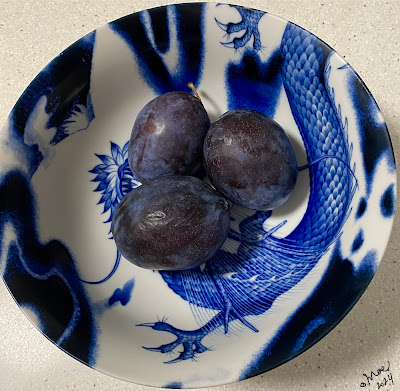“Peter is refilling their glasses now, and the server is bringing their main courses to the table. Ivan has ordered the salmon: a glistening pink fillet topped with delicate dissolving flakes of salt, surrounded by buttered green peas and asparagus and baby potatoes. … In his mouth, the salmon melts hot into an abstraction of flavour: salt savoury fish and the bright sparkling taste of lemon juice, melting together on the palate. It is extremely flavourful, Ivan thinks, extremely good to eat” (Intermezzo, p. 156)
That’s how Sally Rooney describes food. Vividly, but not very originally. It’s also how she writes sex scenes — vividly but not very originally. These scenes are numerous in the book Intermezzo. Maybe too numerous and a bit overdone. My thoughts on the book as a whole involve the way I feel about her character development.
People who think of themselves as complicated, and who try to impress others with their complexity and with how interesting it makes them, have always annoyed me. Ultimately, I think these “complicated” people are boring. At least that’s been true in my experience (though the trend is more pronounced in people much younger than I, so I haven’t been involved with it recently). Well, I have to face it. All the characters in Sally Rooney’s book
Intermezzo are exactly this type of self-conscious “complicated” people who in my opinion aren’t really that interesting.
”Sally Rooney is not an interesting person. She’ll tell you this herself — recently, in an interview with The New York Times for her new novel, ‘Intermezzo,’ she replied to a question about her hobbies with: ‘What do I like to do? I feel like I’m so uninteresting.’”
The article makes the point that you shouldn’t presume that the characters in a novel are really versions of the author herself (the book is pointedly talking about women authors). This isn’t news to me — I spent years trying to convince my former book club that we shouldn’t think that way. I can see how the book tempts people to view the characters as more real than fictional because of the writing style: maybe being too vivid creates an illusion that you aren’t in a fictional world. I feel as if there’s a lack of distance.
Intermezzo is about two brothers, Peter and Ivan, and their girlfriends. Peter is in his mid-thirties. One of his two girlfriends is around 23; the other one is his age, and has been in his life since they were in college. Ivan is (sort of ) in college, and his girl friend is in her mid-thirties. Each character worries about why they are attracted to someone so different in age. The three in the triangle worry about being judged for that. And they all worry that their friends and acquaintances will judge them for having a relationship that’s age-unbalanced. After a while, I got tired of hearing about the age hang-ups from all five main characters. They spend too much energy on what other people think.
Peter and Ivan have a very strained fraternal relationship. A key scene in the book is a quarrel between them that leaves them estranged for several weeks. They think about everything in their relationship going back to childhood as very complicated. Peter was much older, and Ivan looked up to him but didn’t get all the attention he wanted from him. Their parents split up when Ivan was very small, and they had to live with their mother and her boyfriend sometimes. Their father had died a week before the novel’s beginning. (It’s a conventional novel with events in chronological order and flashbacks or memories as needed.) Both are mourning him and are feeling a sort of rivalry about who was closest to him, who had done the most for him. Neither of them is close to the mother at the time of the novel. Does this make them complicated and interesting? Well, in my opinion, not really.
Peter is depressive. He drinks too much and takes lots of prescription pills to help his moods. He obsesses about this that and the other thing. He can’t decide which girlfriend he loves better because he loves both of them. All the other characters are very patient and forbearing with him, including his mother. That is, until Ivan gets mad. Does this make him interesting. Unfortunately, no. And with Ivan, it’s similar, though he also worries about winning chess tournaments as well as about his love affair.
Intermezzo is a very well written and readable book, but its two main characters aren’t really likable, especially Peter. The women are described in less emotional detail than the men; they are a bit more likable but they are overshadowed, as characters, by the men. The story works, but somehow it seems a little bit hollow.
Sally Rooney is a very popular author, to a much greater extent than I realized when I decided to read her new book. Although I liked it and respected her talents, I suspect I’m not really in sync with her vast fan base. I admire this book, but just didn’t enjoy it the way I sometimes enjoy a novel.
Review © 2024 mae sander






































































